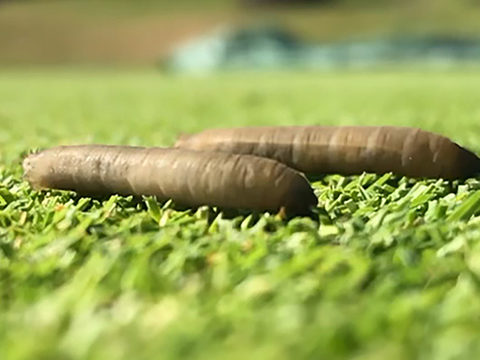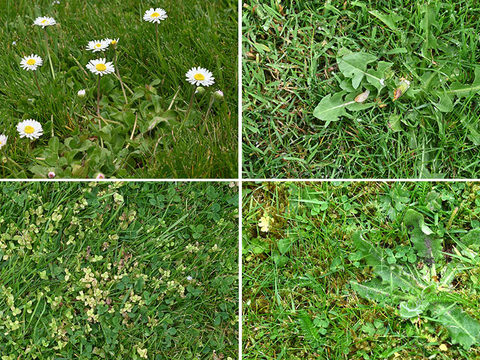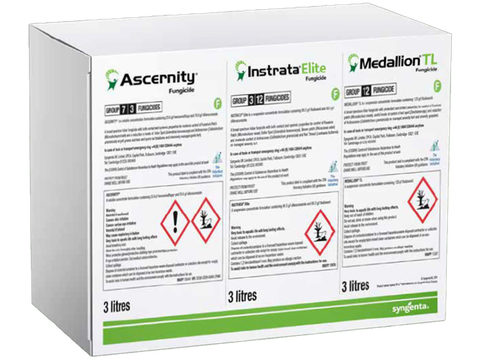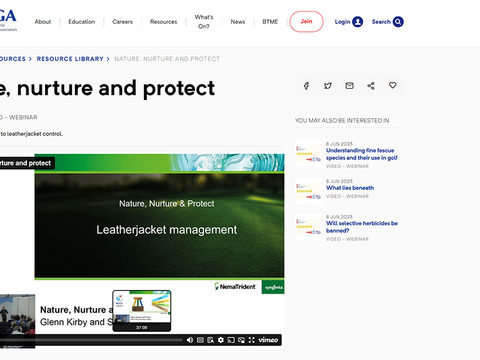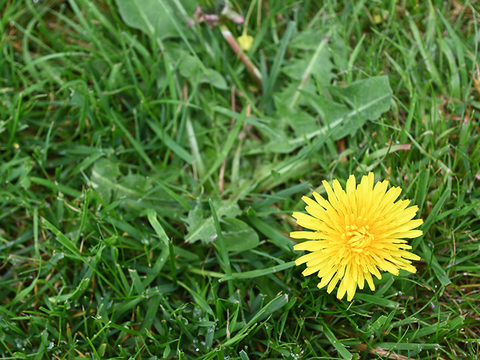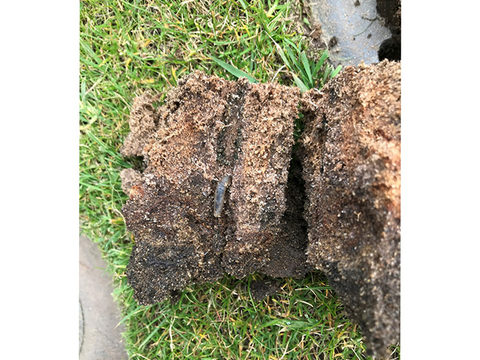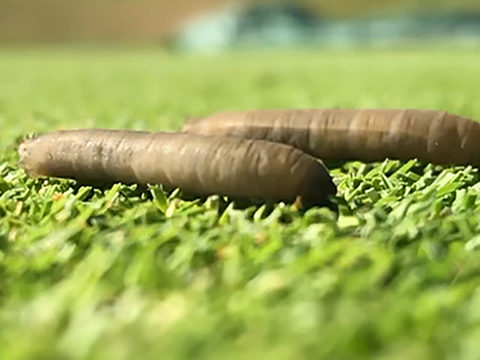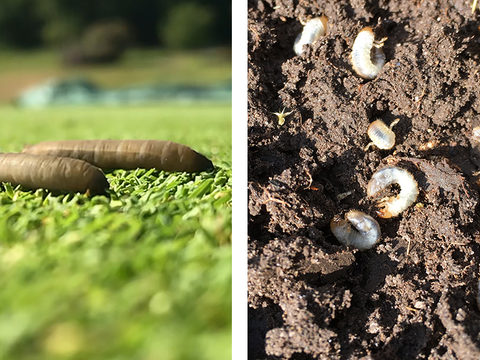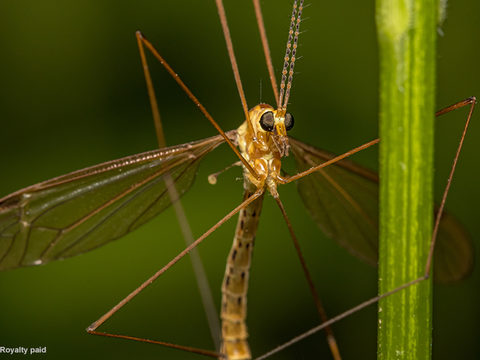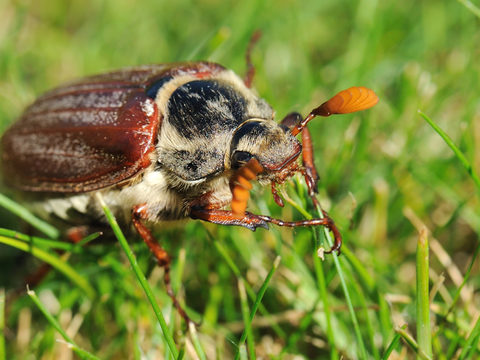GreenCast in UK and Ireland - ENHANCE TURF HEALTH TO CUT STRESS EFFECTS

Visitors to Turf Science Live were the first to see a demonstration of new research into turf health enhancement programmes designed to counter the effects of stress and give the chance to maintain better playing surfaces right through the season.
Dr Louis Simard, Head of Turfgrass Research at the Syngenta Turf R&D centre at Stein in Switzerland, highlighted how some products have been found to have turf health benefits over and above their primary role - which can give added benefits for turf quality and particularly in delaying the onset of stress effects.
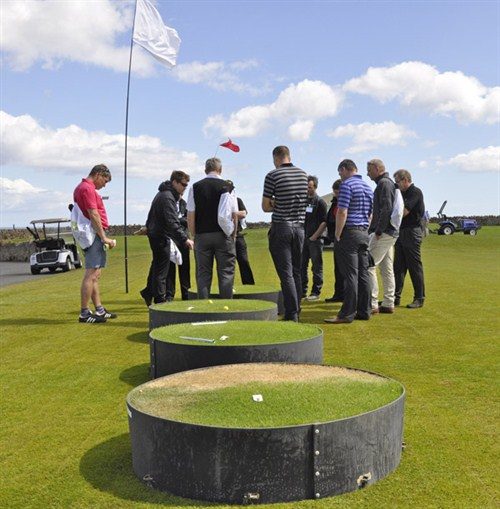
He explained some of the science behind the turf enhancement involves increasing the plant's levels of anti-oxidants, which gives it a natural buffer against damaging free radicals that are created during cell division under periods of stress conditions. The higher the level of available anti-oxidant, the better the plant is able to cope with stress before any damaging effects are seen.
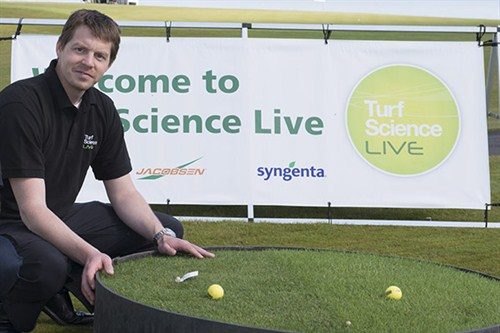
Louis cited the case of where adverse weather and the presence of turf disease spores could conspire to create conditions where an outbreak would be expected, but no infection occurs; which is largely down to healthy plants having sufficient anti-oxidants to naturally withstand and repress the disease attack. However, if there are other stresses imposed on the turf at the same time, possibly drought or nutrient deficiency, the infection is far more likely to take hold and cause damage.
The analogy is that it is similar to a healthy person being able to avoid catching a cold, whilst another who is tired or otherwise stressed is far more likely to succumb. Foods and drinks known to stimulate anti-oxidants in the body are recognised at helping to offset the effects of stress, in just the same way that greenkeepers can use tools to manage turf more effectively.
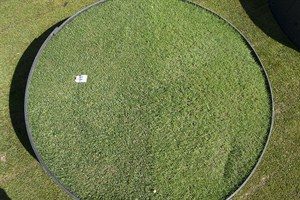
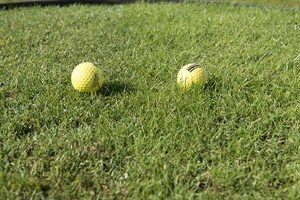
Primo Maxx has become an industry standard to deliver cost savings from effectively managing turf growth and improving playing surface quality through improved density, leaf vigour, colour and rooting (above, treated left; untreated right). Furthermore, over the course of the season, the level of anti-oxidants in turf plants has been shown to increase by up to 40%, compared to untreated.
Part of this is believed to be through the direct effects on the turf plant, but also, by increasing the chlorophyll concentration in the leaf, it is photochemically more efficient and can generate its own anti-oxidant capability.
This is especially important in building up the buffer of stress busting anti-oxidants that can enable turf to stay looking good for longer. It is a key component of pre-stress conditioning with Primo Maxx, which has proven highly effective in managing drought stress and maintaining the root mass over the summer. Untreated turf typically suffers a serious decline in root mass during periods of hot weather, which limits its ability to withstand any other stresses and slows the potential to recover when conditions improve.
Louis reported outstanding results shown in Scandinavian turf research, where the build-up of carbohydrate root mass and enhanced turf health over late summer and early autumn under a Primo Maxx programme had resulted in more than 80% reduction in Microdochium (Fusarium) Patch disease damage during the winter.
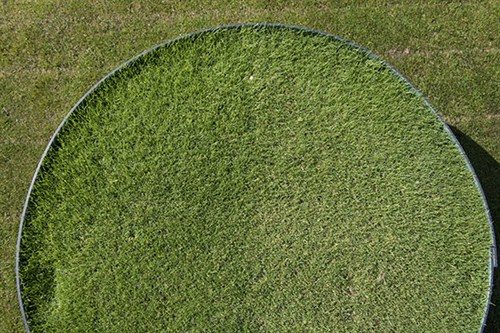
Heritage Maxx is principally used for preventing disease attacks from late spring through to the autumn, when the systemic fungicide activity gives maximum protection to the growing plant - along with activity on soil-borne Fairy Ring and Take-all diseases.
However, trials have shown that it also promotes stronger, healthier turf with improved green colour, even in the absence of disease (above, treated left; untreated right). The TSL demonstration showed the improved vigour and density of turf that had received two applications of Heritage Maxx, even though it had been grown in a clean, disease free environment. Trials have shown up to 20% increase in anti-oxidant levels in treated turf, which when assessed for playability was also judged to be 20% better. If there had been any disease present, or the turf placed under other stress factors, the benefits would have been even more visual, with untreated turf far more susceptible to attack.
Louis acknowledged that greenkeepers are unlikely to make an application of Heritage Maxx solely for its turf enhancement effects. But where they are targeting a disease, it makes sense to tailor the treatment timing to take advantage of the health benefits ahead of any period of stress that may make the turf more susceptible to attack and damage - such as summer aeration, heavy wear through a tournament or the autumn renovation programmes, he advised.
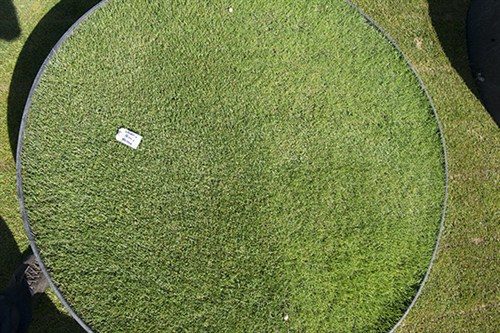
The demonstration also showed the impact of exposing turf to stress, and how the product combination of Heritage Maxx, Primo Maxx and Qualibra can help to minimise the onset of symptoms. By stopping watering the covered turf tubs they were artificially subjected to drought stress. After four days the untreated turf (above, right hand side) was already losing colour and leaf vigour, with leaves becoming lax to a point that would make maintaining ball speed and consistency difficult. The treated half of the tub showed no effects.
After 10 days without water (below), the implications were clearly evident to see; untreated turf had seen total leaf collapse and loss of colour. Without any photosynthetic activity, the plant has no ability to withstand other stresses or damage imposed. The treated turf, however, had remained remarkably green and healthy. Inevitably some effects were starting to be seen under the incredibly harsh test, but it had really illustrated the potential to delay the onset of effects and to buy time for conditions to change, whilst maintaining surface conditions demanded by players.
Louis pointed out that, unlike the other treatments, the Qualibra itself had no direct effect on the plant physiology - which is the case for all wetting agents. However, by holding soil water in the root zone whilst maintaining a firm, dry playing surface, it can significantly help to alleviate the factors that cause stress, especially drought stress. Furthermore, root mass is encouraged to grow larger and where dry patch has been prevented more of the root is in contact with soil moisture, thereby aiding greater uptake of water and available nutrients that further promotes turf health and its ability to withstand stress. It creates better growing conditions that allow plants to make better use of all other inputs and enhance their health to self-generate the essential anti-oxidants.
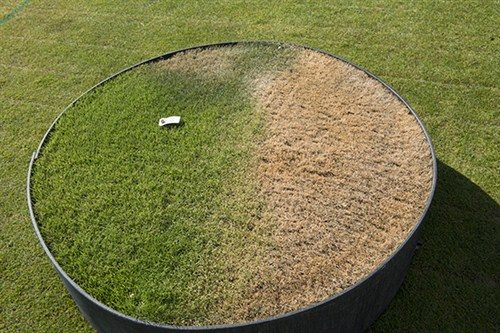
Louis added that Syngenta research now includes whole teams of scientists and specific projects looking at health enhancing attributes of new products during the development phase. He believes future new options will bring far reaching benefits and opportunities for greenkeepers to make better use of fertiliser, water and other inputs in a sustainable turf management programme, along with the most important role to create consistently better playing conditions.

